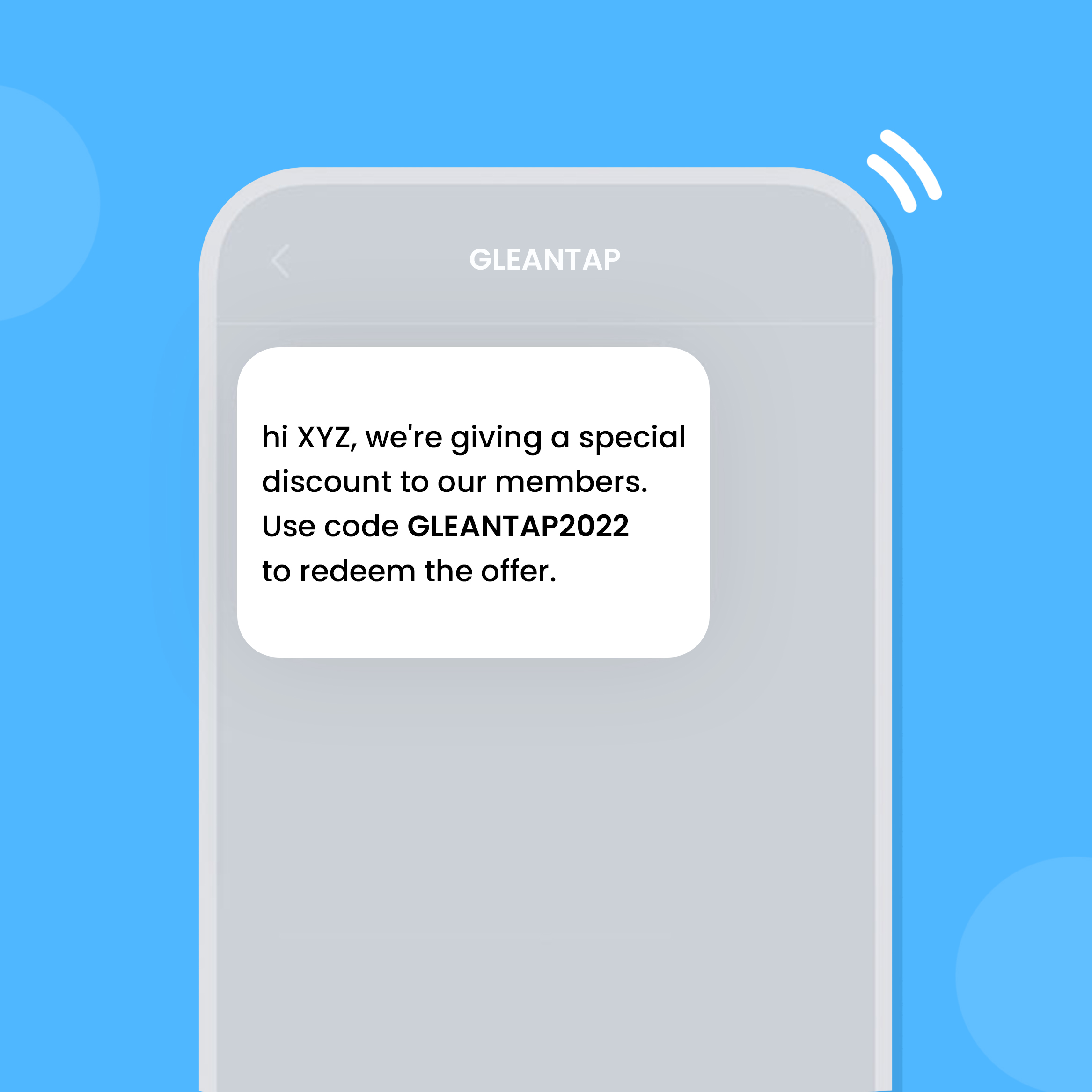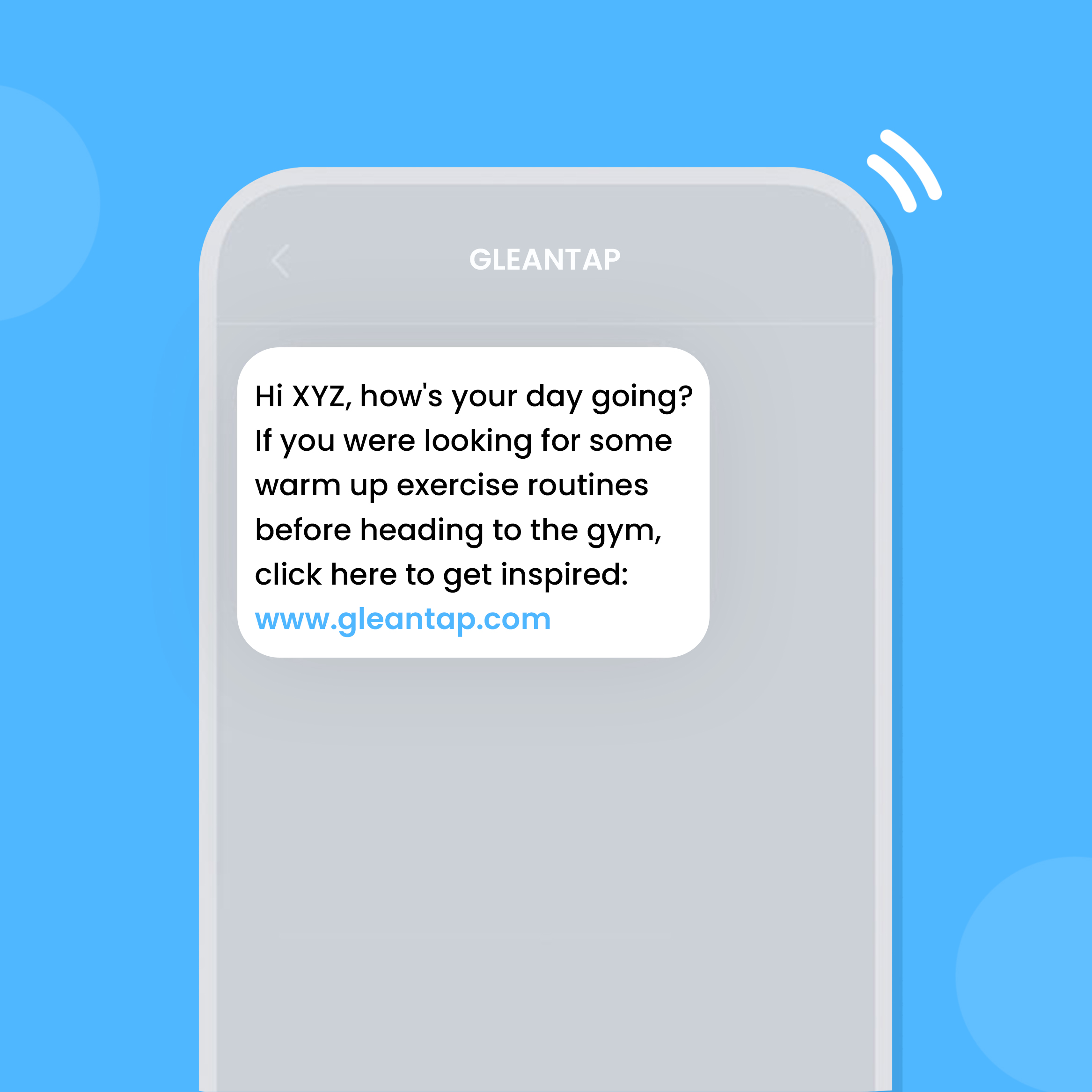People are glued to their phones. Smartphone owners spend an average of 6 hours a day on their devices. So, if you’re a business owner, it makes sense to target consumers through their phones.
If you want to get your target audience’s attention, all you have to do is send a text, right? Not really.

Text message marketing is booming in popularity, so you have to compete with many other businesses vying for consumers’ attention through texting.
Therefore, you have to ensure that your text marketing plan is A1. Thankfully, we’ve compiled a list of campaign ideas and practices to ensure that your business texting efforts reap major rewards.
What is Business Text Messaging and Why Is It Important?

Business text messaging, or SMS marketing refers to the use of text messages to promote your products or services. With text message marketing, you send messages to customers on your contact list — this is also known as mass texting.
This form of marketing can achieve many objectives like increasing brand loyalty, boosting sales, and engaging your audience.
Compared to other mediums, text messaging is the most powerful.
Here are a few reasons why:
Texts Aren’t Ignored
On average, 98 percent of all text messages are read. And 90 percent of messages are read within three minutes.
Additionally, most smartphone owners spend between five and six hours a day on their devices— which makes it less likely that they’ll miss your message.
Texts Are Profitable
About 60 percent of business owners reported that they plan to increase their text marketing budget over the next year — and we have an idea why.
Text message marketing yields excellent results. The average conversion rate for text message marketing is about 45 percent. And the click-through rate for SMS promotions is about 19 percent.
Consumers Prefer Text Messages
People love sending and receiving text messages — a lot. In fact, 77 percent of consumers say that the messaging app is the most used app on their phone.
Think business text messages might come off as annoying? Turns out that most people won’t mind getting a text from your brand. About 70 percent of consumers prefer to receive transactional messages via text.
Email V. Text: How Do They Stack Up?
As we’ve established, texts are immediate and seldom get ignored. With email, messages run the risk of being ignored or sent to spam.
Most of the emails are sent to SPAM. In fact, a whopping 49.7 percent of emails are sent to the dreaded SPAM folder.
Thankfully platforms like GMAIL have made it easier for promotional emails to avoid spam with the designated Promotional folder. But why have your email sitting in a folder when you can get your message delivered instantly?
With SMS marketing, your customer has the highest chance of receiving, reading, and responding to your message.
Engagement with SMS is not only high, but it’s fast, too. On average, consumers take about 90 seconds to respond to a text message.
How does the lightning-fast response rate of SMS compare to that of emails?
According to Business2Community, SMS marketing response rates can be as high as 45 percent. Meanwhile, email response rates are only 6 percent.
What Are 3 Things You Need to Know Before Starting Business Text Messaging?

Ready to start sending business texts? Awesome! But there are a few things you should know first.
You must comply with guidelines established by the Telephone Consumer Protection Act (TCPA). Violating this act could get your phone number blacklisted, and it could be very costly. Businesses can incur a $500 minimum penalty per text message sent that violates the TCPA.
Here’s a quick guide to TCPA compliance:
Consent Management
According to the Telephone Consumer Protection Act, consumers must give businesses “express written consent” before they can receive texts. Informational text messages also require consent.
We’ll talk more about the ways customers can consent to receive marketing messages a little later.
In addition to getting consent, you must also disclose the full scope of your messages and give customers the option to opt out.
Avoid Snowshoeing
Snowshoeing occurs when you send messages across many phone numbers or shortcodes. This is often used as a way to avoid per number rate limits and volume limitations.
Snowshoe messaging is also a common tactic of spammers. So, this technique may result in your messages being blocked by spam blockers. Your number may even end up blacklisted.
Identify Your Business
According to the TCPA, you must include your business name in all messages. Along with including your business name in the actual message, it must be included in any shortened links.
So, when you include shortened links in your messages, your web name should also be in the link. Below is an example from Vitacost.
You can see that the brand name is in the message bubble and visible in the shortened link:

How to Get Started With Business Text Messaging
Now that you’re familiar with the federal regulations for SMS marketing, let’s talk about some of the main features of SMS marketing.
Check out this beginner’s guide for sending marketing messages:
Collect Consent
As explained earlier, collecting consent from your customers before you send them messages is a must. You can obtain consent in a few ways.
One way you can collect consent and phone numbers is through an on-site form, like a pop-up.
You can request contact information and at the bottom of the form include a checkbox allowing the customer to opt-in to receiving marketing messages.
You will also need to send a follow-up text that confirms their subscription. Below is another example from GREATS:

(Source: Klaviyo.com)
Choosing the Software
It sounds a little counterintuitive, but you don’t need a phone to run a successful text message campaign. Large-scale SMS campaigns are sent via cloud-based text platforms.
Texting via cloud-based software allows you to plan scheduled messages ahead of time. This means you can plan your marketing campaign in advance.
Here are two ways you can send marketing text messages:
1. Text Campaigns
Text campaigns are texts you can send to a list or segment of your subscribers. You have many options when it comes to text campaigns. We’ll get into specific types of campaigns later.
2. Text Automation
Text automation is based on customer behaviors and triggers. Unlike your contact list that you send text campaigns to, your customers will only receive an automated text when they perform a certain action.
For example, after a customer completes a purchase, they will get an automated text message with a confirmation number.
SMS automation also includes a welcome series and abandoned cart text.
Choosing the Phone Number
When choosing the phone number to use, you have a few options.
Toll-Free Numbers
The most common is a 10-digit toll-free number. They’re versatile and you can use them for mass text blasts and 2-way conversations.
Local Numbers
If you plan on having 1-on-1 conversations with customers, it’s a good idea to get a local number with your area code. People will appreciate the familiarity of it.
However, this has its limitations. With local numbers, you can’t text large groups of people at once. If you need to text 200 people or more at once, a toll-free number or shortcode is best.
Short Codes
You’ve probably seen these before. A company may advertise a short 5 to 6 digit number and have people text a keyword.
A shortcode is a more accessible option and is simpler to remember than a longer toll-free or local phone number.
For short code compliances and guidelines, check out the CTIA Short Code Monitoring Handbook.
Segment Your Audience
One mass text message isn’t going to apply to every subscriber in your database. Segmenting your audience allows you to tailor your messages based on a customer’s demographic and interests.
Segmenting your audience and personalizing your messages can reap major benefits.
A whopping 80 percent of consumers are more likely to make a purchase when a brand offers personalized experiences.
Call-to-Action
A call-to-action is how you want your customers to interact with your brand. It could include clicking a link or redeeming a coupon code in the message.
Another common call-to-action in text message marketing is encouraging customers to text a keyword to your phone number.
You can even take it a step further and sprinkle a little urgency on your call-to-action. Doing this will encourage customers to act on a time-sensitive offer.
Text Message Marketing Campaign Ideas
Now that you’re caught up on the basic elements of a typical SMS marketing campaign, it’s time to go over a few campaigns ideas:
Send a Discount

People associate text messaging with human connection, so sending a robotic text is off-putting. It’s a great idea to personalize your message to break the ice. For example, you can thank your subscribers for signing up by sharing a discount.
Provide Advice or Tips

This goes back to the notion of providing value to your subscribers. If you are a wellness brand, you might send tips on the best vitamins, or if you’re a cookware brand, you might share tips for cooking.
Share Content

Text messaging can serve as a way to distribute your content. If you post weekly blog posts, you can send a reminder with a shortened link to subscribers encouraging them to check it out. This is a great way to get more people to view your content or visit your website.
After sending an SMS text businesses can see a 400 percent increase in traffic. A recent Stone Temple study found that 63 percent of website visits now come from a mobile device.
Collect Reviews

Reviews are a surefire way to improve your credibility and boost conversion rates. Texts are an easy and convenient way to collect them.
After a customer makes a purchase, you can send a text message with a link to your website review page or Google Reviews.
You can even have them submit reviews through text. Below is an example from the food delivery service GrubHub.
To collect reviews, GrubHub sends a quick and easy questionnaire for the recipient.
Tips for Collecting Phone Numbers
There are many ways you can collect phone numbers. Regardless of the technique you choose, you should aim to provide something of value.
For instance, you can have your customers give you their phone number in exchange for a discount or coupon code. By offering an incentive, you could grow your subscriber list 520 percent faster.
Here are some practices that will help you build your contact list:
Keywords
A keyword is a short word your customers can text to your number to opt-in to receive messages.
For instance, a vitamin brand may invite customers to text the word “HEALTH” to 123000.
Opt-In Widget
You can collect phone numbers from website visitors with a widget. It’s a free tool you can add to your website.
When someone clicks on the widget, this will open the text message app on their phone with your number and keyword already filled in. This is a quick and convenient way for customers to text your number.
Click-to-Text Buttons
If you want to start a one-on-one conversation with customers, a click-to-text button is the way to go.
All customers have to do is click the button to start a text thread with you. Like widgets, you can easily add them to your website.
Web Forms
These are the most common ways to collect contact information from customers. And you probably already have one on your website.
All you have to do is add a phone number field to it. But be sure to include an option to give consent at the bottom of the web form.
Using an email to collect phone numbers? Yes, it’s a thing, and it works! SMS marketing opt-in rates via email can be as high as 10.5 percent.
You can use marketing emails to encourage your customers to sign up for your messages. An email with a link to your web form is a great way to grow your subscriber list.
Facebook Ads
With over 2.6 billion active users, Facebook ads give you many opportunities to target a specific audience.
One way you can do this is through Facebook Lead Generation ads. With this technique, people can click on your ad, provide their number, and be added to your contact list.
Contests
This is another method that involves keywords. This invites people to text your phone number for a chance to win a prize.
Checkout
You can invite customers to sign up for texts during the checkout process. You can do this in person if you have a physical location or you can do it on your online store.
Tips for Running a Successful SMS Text Campaign
By now, you should already have an idea of what type of SMS campaign you want to run. But don’t forget to incorporate these success-boosting tactics:
Check Replies
You won’t leave your friends’ messages unanswered, would you? The same goes for your customers.
Even if you send mass messages, some subscribers will reply — especially if you encourage a one-on-one conversation.
For example, the cookware brand Equal Parts offers a “text-a-chef” feature. This feature connects an actual chef with subscribers.

(Source: SMS Marketing Examples)
When customers text Equal Parts they are talking to a human rather than a chatbot. This requires members of their team to be on-hand to answer messages and provide guidance to customers.
Identify Optimal Delivery Times and Frequency
One of the biggest concerns business owners have about text message marketing is the time they should send marketing texts.
In compliance with the TCPA, you can’t send messages outside business hours — between 9:00 AM to 5:00 PM, Monday to Friday.
When you plan your campaigns, be selective with what you send and how often you send it. A text message is a personal medium, so you don’t want to overuse it.
A sweet spot for most business owners is one to two messages a week. Of course, you should always test and identify the number of messages that work best for your business and marketing goals.
Establish KPIs and Measure Success
SMS platforms provide extensive reports on the success of your text marketing campaigns.
Some metrics include:
-
Unsubscription Rate:
The unsubscription rate is a measure of how many people unsubscribed from your campaign within a certain time frame.
-
Click-Through Rate:
The Click-through rate shows how many people opened the message, clicked the link, and followed your call-to-action.
-
List Growth Rate:
This is a measure of how fast your contact list grows.
Discover How Business Texting Works for You
There you have it! Now you’re an expert at business messaging. As you can see, SMS marketing can yield amazing results. It has the power to boost sales and improve connections with existing customers.
What do you do now? Begin tailoring the methods mentioned here to your business. If you’re just starting out, don’t feel pressured to try every campaign we’ve listed today. Begin with one or two campaigns and continue to grow and test.
Get the full story here:



